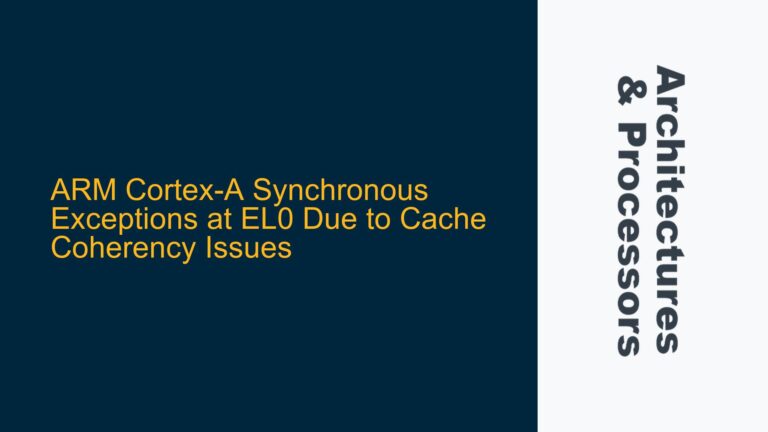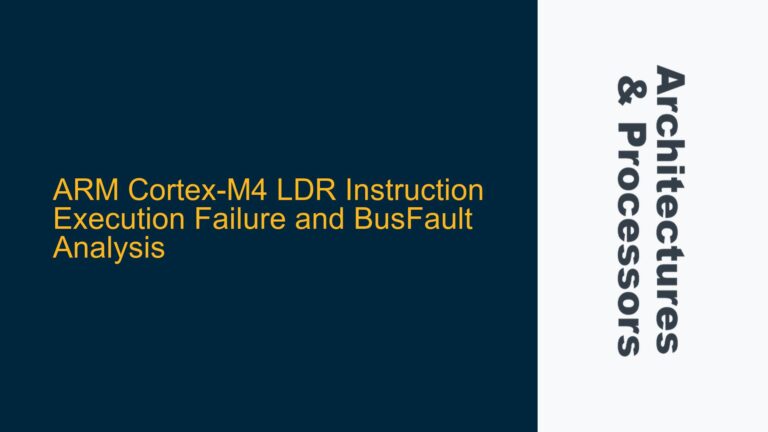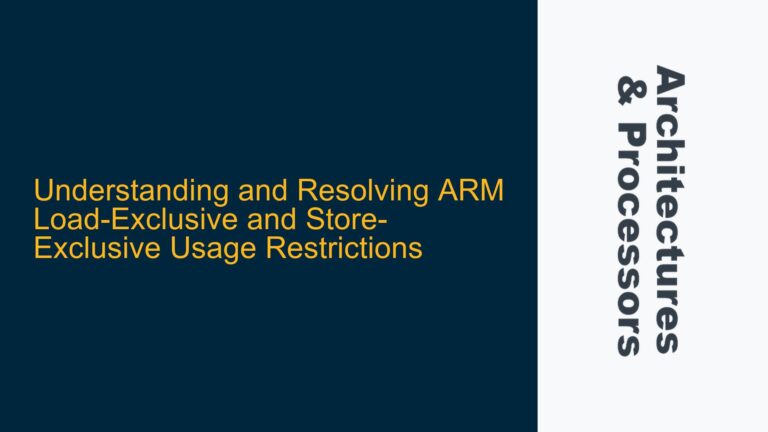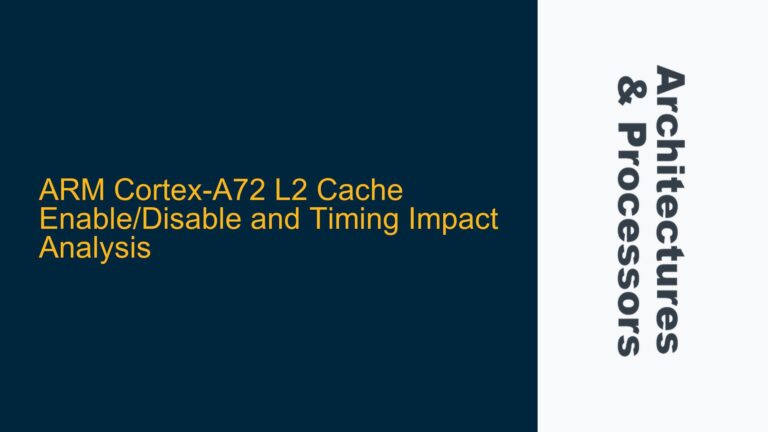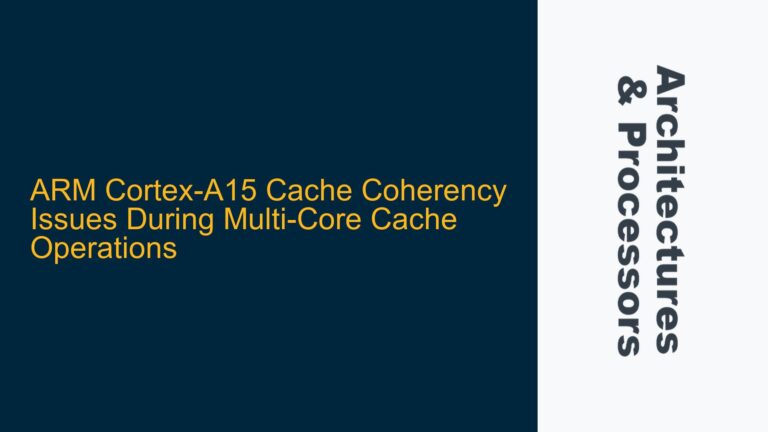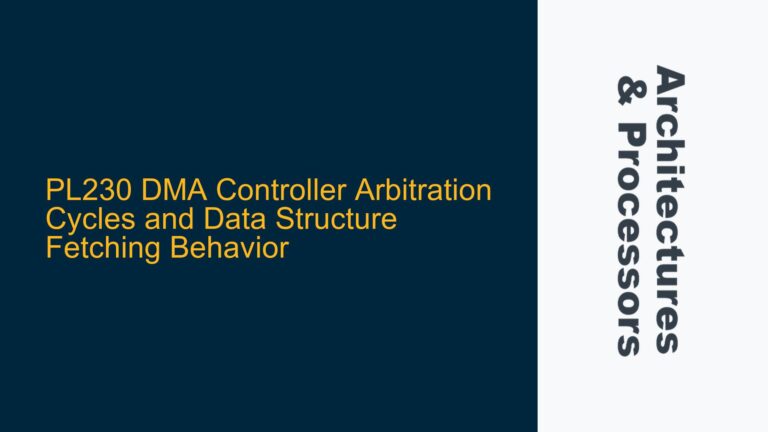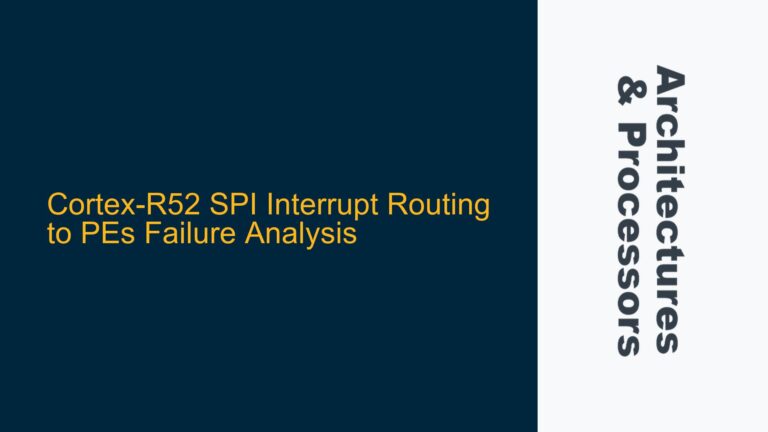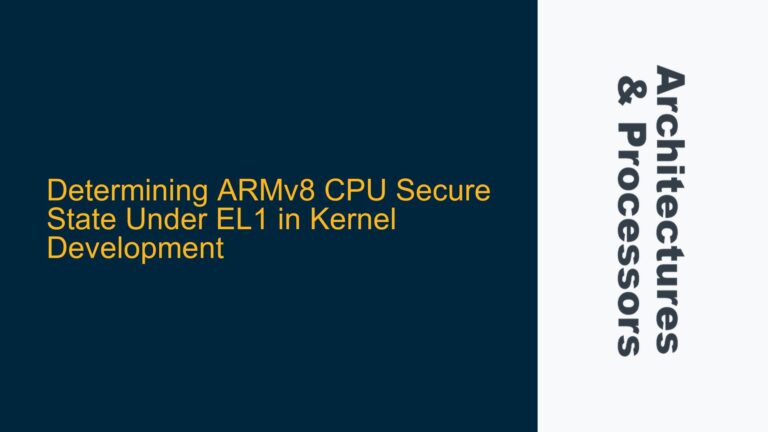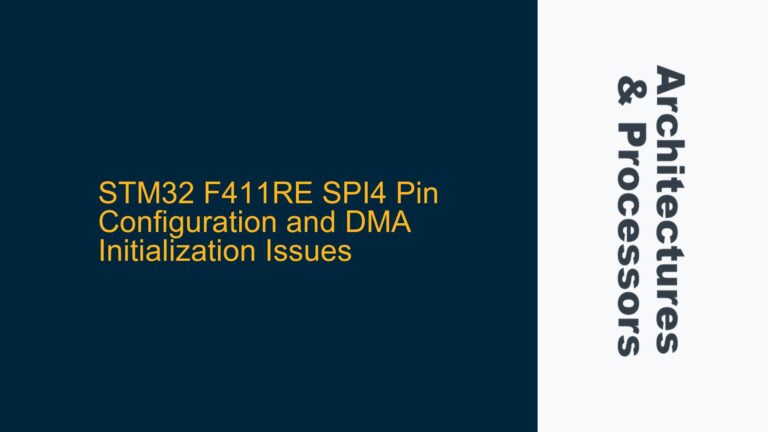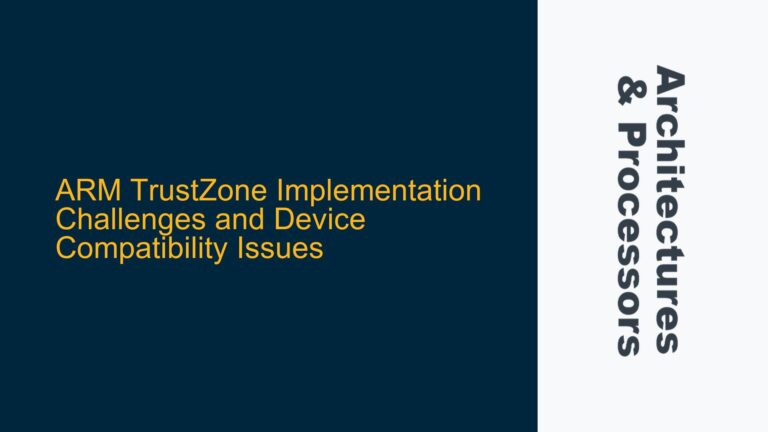ARM Cortex-A Synchronous Exceptions at EL0 Due to Cache Coherency Issues
Synchronous Exceptions at EL0 During User Program Execution When transitioning from EL1 (kernel mode) to EL0 (user mode) on an ARM Cortex-A processor, synchronous exceptions can occur unexpectedly during the execution of user-space instructions. These exceptions are often accompanied by an Exception Syndrome Register (ESR) value of 0x2000000, indicating an "Unknown reason" with an instruction…
